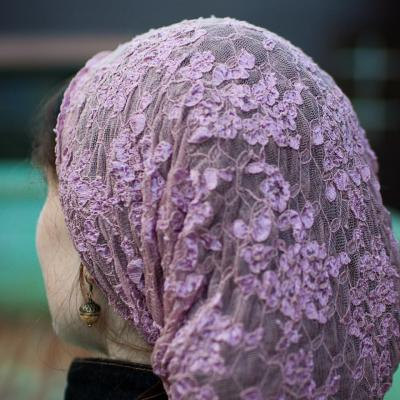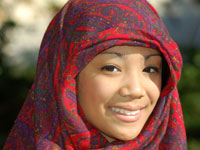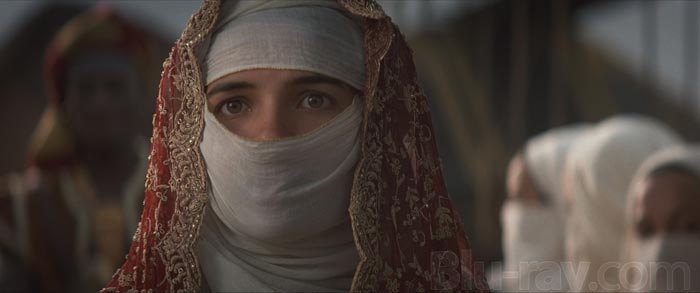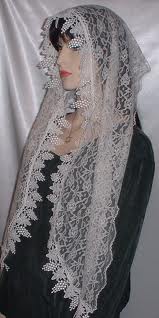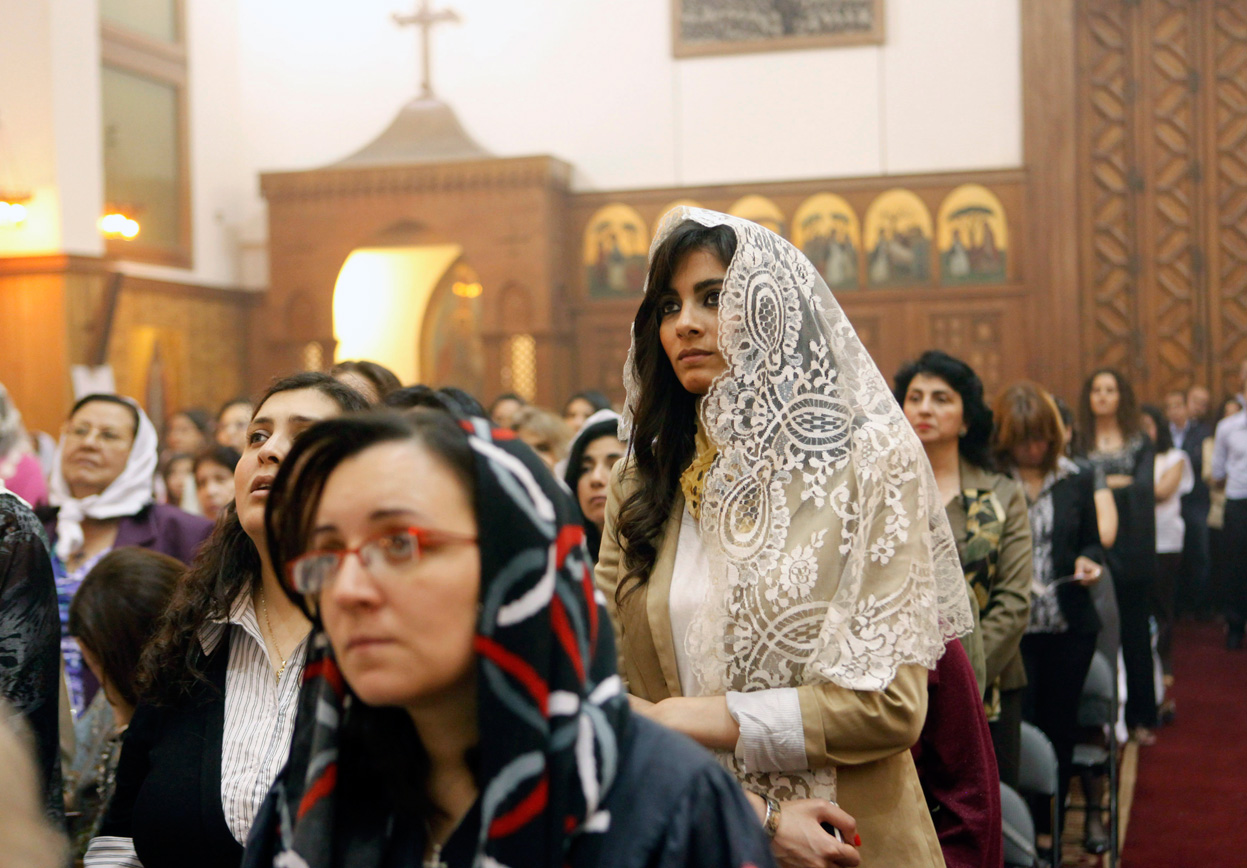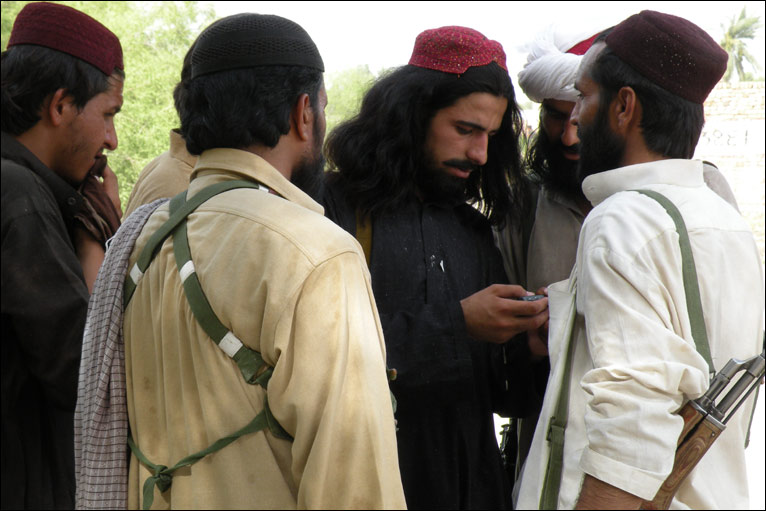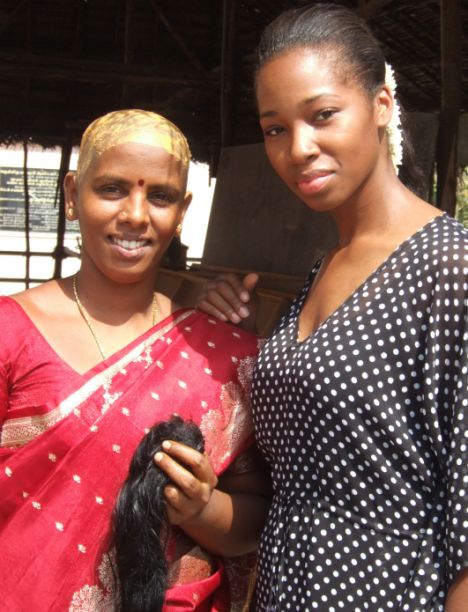I wear a headcovering 99% of the time except when I am at home. There are scriptures to support women covering their head but also I find that keeping my head covered brings me to a place of spiritual intimacy. It reminds me of my place with Yeshua as a bride and it helps me to feel secure. When I don't wear a covering, I feel exposed and naked and it makes me very uncomfortable. I'm probably weird in this and it wouldn't be the first time.
I think your question of headcoverings is very thought-provoking...and something worth considering when it comes to the way we dress.
For myself, I think that headcoverings are rather beautiful...and in regards to coverings, there are a myriad of variations that headcoverings can take place in. Be it with wearing burkas/veils or with wearing covering on one's hair to cover it, they all look stunning.. And though I used to not be for it fully, I must say it started to come more alive for me the more I began investigating/looking into Eastern culture/seeing the many variations of coverings that the women used.
Though many assume that wearing veils---be it partial or full (entire body coverings)---is something that shouldn't be done, I think there's something to it that many may miss.
There was one time earlier this year where I was driving to a meeting and the women had a full body covering like what often occurs in Muslim families....and I respected the fact that it seemed they were being conscious in their actions behind it.
And in media, the way that many of the women with veils have been portrayed have been very beautiful. As I've mentioned elsewhere, one of favorite movies of all time, called
"Hildago", is on how an American Indian cowboy and his mustang are placed against the world's greatest Arabian horses and
Bedouin riders, some of whom are determined to prevent a foreigner - and especially an "impure" horse - from finishing the race. In Arabia where the race occurs, one of the main characters who helps the cowboy out is the sheikh's daughter, Jazira. One thing thing refreshing about the portrayal of Arabs in this movie is Jazeera's strong rebellious character, as she stands up for what she believes is right and argues with her father when she has to..and yet she takes seriously her appearance/the way she carries herself around others. I was always floored seeing how she dressed and how stunning she was.
For more, a clip from the full movie one can see online:
Hidalgo (2004) Part 3 of 13
Sadly, many feel that veils and headcoverings are somehow "oppressive" ...but in many of the churches I've seen/been to, including Jewish circles I've seen,
head coverings are very beautiful to behold......and for many, the issue of wearing a veil is more than appropriate since it is an issue of modesty and preventing others from not respecting the glory that a woman possesses. Also, many may not be aware of how Paul also discussed in I Corinthians 11..specifically,
1 Corinthians 11:1-3 and 1 Corinthians 11:14-16 /
1 Corinthians 11 . The explicit purpose of the Christian woman's headcovering, as stated by Paul, is that it is a sign of man's authority over woman. ..
For a good review on the issue, one can go online/look up the following articles:
Concerning veils for those who are believers, it is interesting to see others who feel that all a
ll Hebrew women wore veils. In passages like Isaiah 47:1-3 where God pronounces judgment, He likens a wicked nation to a woman and speaks of “removing the veil” as an act of judgment and humiliation. Such language would make no sense unless the women in Isaiah’s audience wore head coverings routinely.
Genesis 24:64-66 /
Genesis 24 seems to speak to this, concerning Rebekah and how Issac found here when it came to her veil that she wore....and Genesis 29 seems to be another passage that seems to speak on the issue when it comes to
Veiling Customs. Jacob’s failure to know the difference between Rachel and Leah on his wedding night (Gen. 29:21-30) has sometimes been ascribed either to his never having seen her face before or to a custom of veiling brides. Of course, the text shows that it was precisely for Rachel’s good looks that Jacob loved her (29:17). Nevertheless, it is possible that his failure to recognize Leah was the result of a veil, which she wore throughout the wedding night..
Genesis 38:13-15 mentions veils as well, though that seems to be in the sense of how prostitutes dressed...
SONG also mentions veils in terms of a relationship developing and the woman being concealed from her lover until there is progression, from courtship to the wedding night:
Song of Solomon 1:7
Tell me, you whom I love, where you graze your flock and where you rest your sheep at midday. Why should I be like a
veiled woman beside the flocks of your friends?
Song of Solomon 1:6-8
Song of Solomon 4:1
He How beautiful you are, my darling! Oh, how beautiful! Your eyes behind your
veil are
doves. Your hair is like a flock of goats descending from the hills of Gilead.
Song of Solomon 4:3
Your lips are like a scarlet ribbon; your mouth is lovely. Your temples behind your
veil are like the halves of a pomegranate.
Song of Solomon 6:7
Your temples behind your
veil are like the halves of a pomegranate.
And in Eastern culture, it seems veils is something that's very much a big deal. And thankfully, within many circles of Christianity in the West, people are beginning to understand/appreciate it whenever it comes to seeing the ways that veils are truly something worth supporting.
For those women who may be Hebrew/Jewish and yet apart of the Orthodox Church or Catholic Church (as there are PLENTY, discussed here in #
4 /#
33 ), veils/head coverings may not be a big deal....but for many others, education on the matter is very much needed..
Head Covering for the Catholic Christian Women
Of course.....there are others who are believers in Messiah and feel that wearing of veils/coverings is nott necessarily in regards to somethiong one has to wear in the sense of external clothing. As another said best from the ministry of
Ichthys in their article entitled
Are women required to wear hats or veils in church?:
In my view, the 1st Corinthians 11 passage (the one responsible for "hats in church") has been widely misunderstood. Women are not required by the Bible to wear hats (or veils). It should be remembered that in this epistle, Paul is addressing many abuses on the part of the Corinthian church ("being baptized for the dead" for example: 15:29; cf. also abuses at the Lord's supper: 11:17-34; abuse of gifts: 12-14; marriage abuses: chapter 7; as well as correcting them on the topics of divisiveness, failure to judge immorality, going to law before unbelievers, etc.). This passage in chapter eleven is addressing another such abuse, namely, the following of the Greek custom of disheveling the hair and marring the appearance when in mourning (something often done in pagan rites of ritual mourning as well - clearly an abomination: cf. Ezek.8:14-15). I
If others wish to think that wearing veils is not necessary, I do believe that they are entitled to do so--but for those who do so in full conviction that its necessary, I think that they're more than within their rights to do so....and that they have PLENTY of scriptural reasons for why they should do so. As it is, its not as if wearing a head covering or a veil means that one cannot be fashionable with it since many actually do so with style:
For more, there was one ministry that had many other excellent articles that I think would bless you---such as seen in the following if wishing to investigate more:
I've greatly enjoyed following the articles from this woman of God, as it concerns her background from a camp that was very big about ensuring that modesty was a must...and yet, understanding of how being modest didn't mean that one had to be against a sense of being fashionable. For those who seek to guard what others see, I must say that its rather amazing to see the differing designs and forms of creativity one can work with.
One organization does specific work within this area, under the name of
Hijab Style...
Though I wish there were others, thankfully, I'm glad others out there are trying to bring headcoverings and veils into the limelight for many others who may not be aware of them


